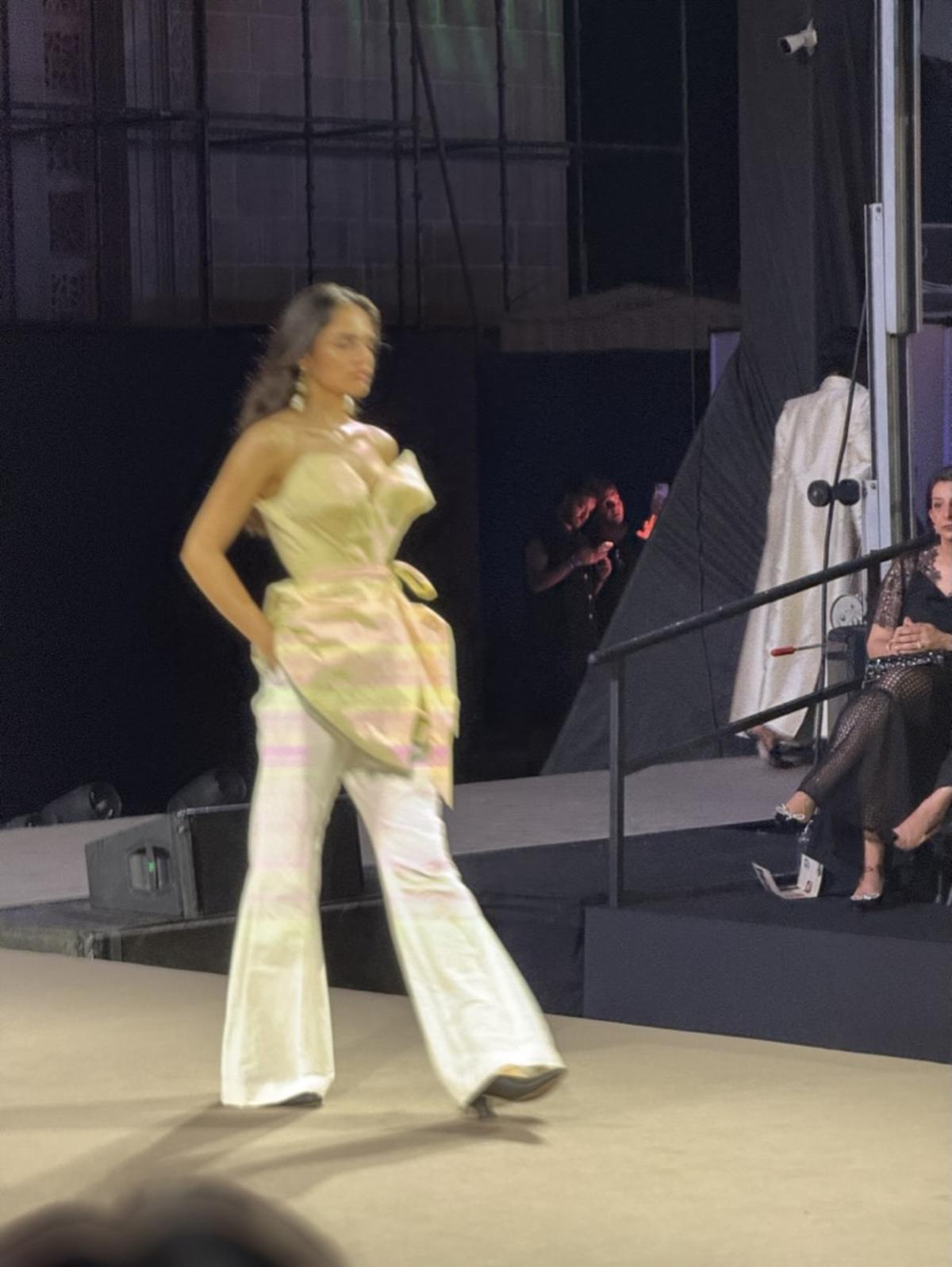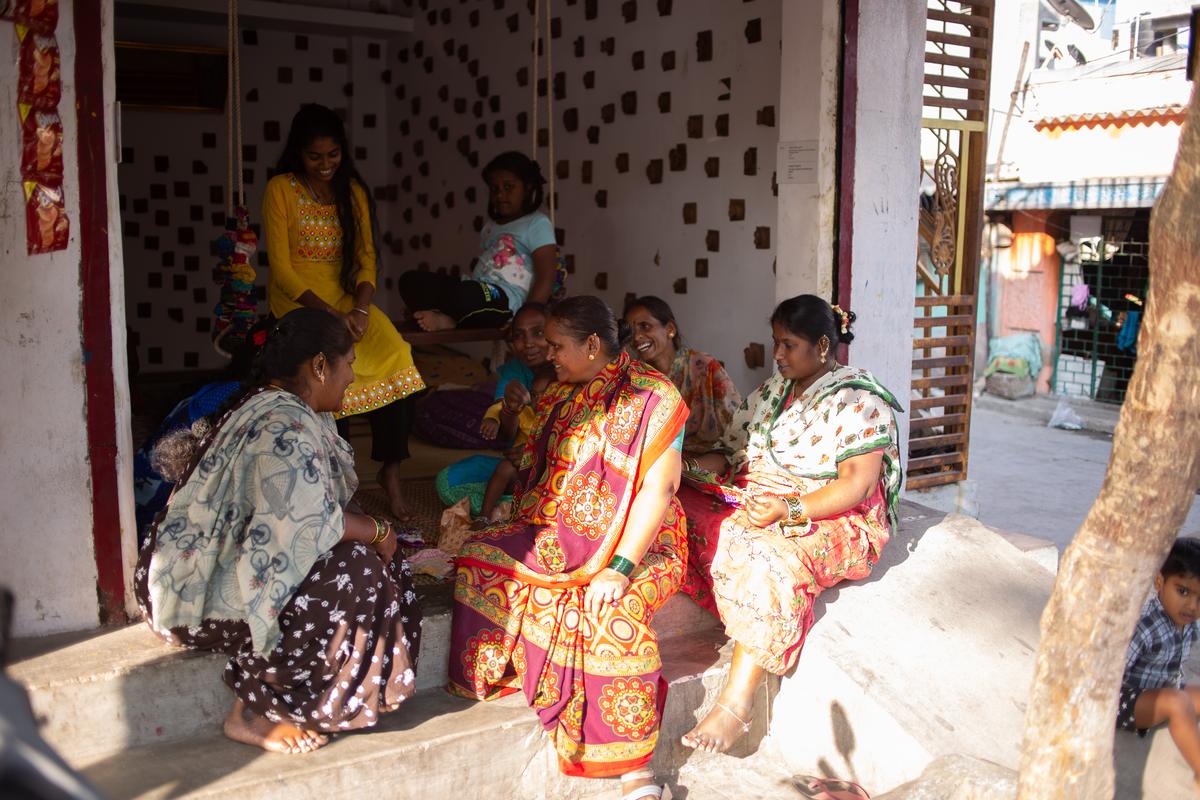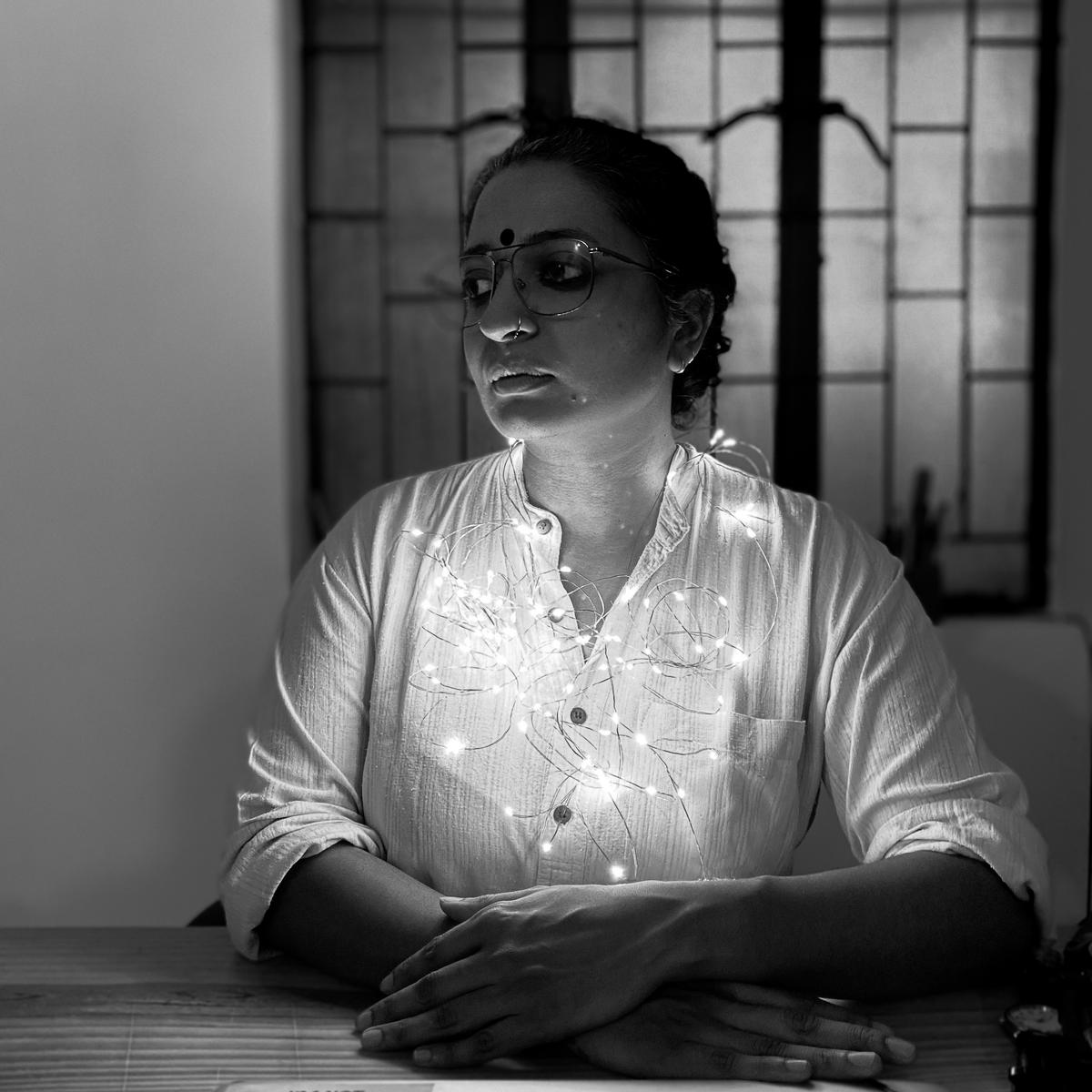The late Dame Vivienne Westwood, the British designer who dragged punk and new-wave fashion into the mainstream in the 1970s, once quipped, “Popular culture is a contradiction in terms. If it’s popular, it’s not culture.” Her disdain for conformity and her love for rebellion were the hallmarks of a career that redefined style as a form of dissent. “Democratic envy,” as she termed it, made people dress alike simply to belong. She preferred dressing for herself — even if no one else approved.
That ethos lingered in the air at Vivienne Westwood’s recent show in Mumbai, staged against the dramatic backdrop of the Gateway of India. The venue — last seen hosting Dior’s pre-Fall showcase in 2023 — came with weighty expectations. Where Dior offered polished precision, Westwood delivered something else entirely: looser, moodier, and far less structured.
Khadi and chanderi fabrics were used in creating the capsule collection
| Photo Credit:
Special Arrangement
Secrecy surrounded the event. There was no pre-show buzz and invites were last-minute invites. A passing drizzle left the air sultry and thick with tension.
The collaboration
The collection, which featured a few archival pieces, was born of a collaboration with Vivz Fashion School in Pune and Aaranya, an initiative led by Priyadarshini Scindia, of the erstwhile royal family of Gwalior. Aaranya’s mission: to preserve traditional crafts, especially Chanderi, famous in Madhya Pradesh, through modern design interventions. Also in the mix was khadi, supplied by the Khadi and Village Industries Commission (KVIC), a statutory body established by the Government of India in 1957. Together, these collaborations were meant to champion craft preservation, sustainability, and cultural exchange.
According to Carlo D’Amario, CEO of Vivienne Westwood, the show’s inception began with his visit to India last year, hosted by Priyadarshini. The trip rekindled memories of his travels through Goa in the 1970s, and coincided with his growing interest in India’s burgeoning luxury market — currently valued at $8 billion and projected to reach $14 billion by 2032.

The model lineup
| Photo Credit:
Special Arrangement
In a poetic twist, the Gateway of India itself features jaali work sourced from Gwalior, linking the royal collaborator to the setting.
The idea for the show reportedly crystallised during Carlo’s keynote at Vivz last year. “He fell in love with India — its textiles, its stories,” recalls Vivek Pawar, the school’s founder-director. But translating that love into garments was not straightforward. Getting khadi and Chanderi to the Westwood studio in Italy meant navigating red tape. “The fabric had to have structure,” Vivek explains. “It wasn’t just about heritage; it needed to hold up on the runway.”
The fabrics certainly delivered on texture and lightness. Carlo was especially taken by Chanderi’s airiness. “I was gobsmacked,” he said. “It felt just right — for India, and for the brand.”
But the garments themselves were less convincing. Creative director Andreas Kronthaler —Westwood’s long-time collaborator and husband — focussed on ease and modernity. The result was a collection anchored by handspun khadi, ethereal Chanderi, flourishes of chiffon, hints of tartan, and the brand’s signature petal flower headpiece. But the silhouettes felt restrained. The repetitive boat-neck corset dress, already seen on Kareena Kapoor Khan and Janhvi Kapoor, became the collection’s default form: pretty, but predictable. The edge that once defined Westwood was softened into something safe.

The iconic Vivienne Westwood floral headband
| Photo Credit:
Special Arrangement
The soundtrack did not help. A jarring mix of Indian classical music and Alisha Chinai’s ‘Boom Boom’ felt more kitsch than counterculture — less rebellion, more runway theatre. Rather than elevating the clothes, the music muddled their message.
Though the choice of textiles — khadi from KVIC and Chanderi from Aaranya — was rooted in legacy, it felt more like a symbolic gesture than a bold statement. The garments borrowed Westwood’s visual cues, but missed her unmistakable voice.
The strategy
Still, the show marked a distinct shift in the house’s strategy. Carlo summed it up: “Magazines are great, fashion houses are great, but it’s politics that gets things moving.” The brand now seems to be leaning into State-supported collaborations, cultural diplomacy, and global craft partnerships. Remarkably, the show was reportedly pulled together in under a month — proof of sharp coordination behind the scenes.
Let us not forget: Westwood’s defining collections — Pirate (1981), Mini-Crini (1985), Anglomania (1993) — did not just play with form. They were provocations. She fused chaos with couture, rage with elegance, and protest with pageantry. Climate change, anti-capitalism, consumerism: nothing was off-limits.

There were 60 looks that made its way down the runway
| Photo Credit:
Special Arrangement
The Mumbai showcase was ambitious in scope and symbolic in spirit. But it lacked the rupture, the recklessness, the radical flair that once made Westwood’s runways a battlefield. It was, in the end, a respectful tribute. But perhaps a little too polite.
Published – April 02, 2025 01:12 pm IST


























